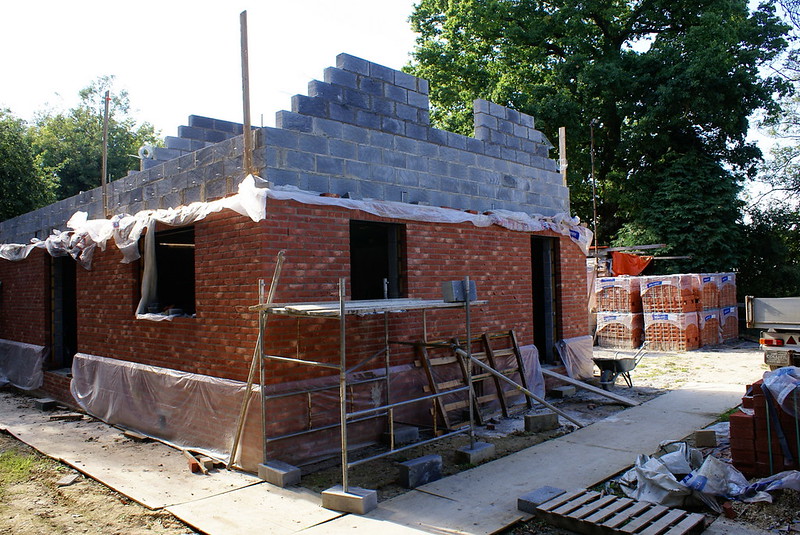Description
New builds (Conversions & Extensions) now having to comply with certain building regulations with regards to how energy efficient a building is, the government has introduced the SAP assessment scheme, which determines whether a building complies with the regulations.
The building regulations spoken of above are:
- Part L (England and Wales)
- Section 6 (Scotland)
- Part F (Northern Ireland)
Here at PHH Energy, we are able to professionally complete any SAP calculations for you, with highly trained members of staff ready to complete the task thoroughly and professionally.
SAP calculations will be required for:
- New builds
- Any existing property being converted into a dwelling (i.e. former office buildings being converted to apartments)
- Extensions to dwellings where the glazing is more than 25% of the floor area being added
As with many mandatory government schemes, there are often a lot of questions that people need to be answered when it comes to SAP calculations. Below we have endeavored to answer the most common of these, but please also feel free to ring us in order to speak with a professional about the matter at hand.
Who is Able to Complete an SAP Calculation?
In theory, it is possible to complete an SAP calculation yourself, but this is definitely not advisable. The staff at PHH Energy have years of experience in the field and the process is a complex one, so we would advise hiring us to ensure that the job is done correctly and within the framework laid down by the government. After all, an incorrect SAP calculation could cost you more money in the future.
It is also the case that SAP calculations take a lot of work, and this is probably time you could be better spending elsewhere on your project. We have specialist software that allows for the SAP calculations to be completed in a timely manner – without this software, the task would take tens of hours to complete.
How is an SAP Calculation Worked Out?
The calculations used to provide an accurate SAP calculation are complex, but in a nutshell, we will assess how much money the cost of providing heating, ventilation, and lighting to the house will be, and then subtract any energy saving solutions from this total.
In addition to this, the amount of carbon dioxide (CO2) that will be released from the dwelling in order to maintain a comfortable and acceptable place to live will also be calculated. The dwelling is then allocated a score from A+ to G, with A+ being the best and G being the least energy efficient.
If you do not achieve compliance with the designs/specifications provided, we are able to advise a number of different ways in which you can raise the score, usually through very cost-effective means. We can then repeat the SAP calculation to prove compliance with building regulations.
Why is an SAP Calculation Necessary?
There are two reasons why you need to get an SAP calculation completed, one legal and the other moral. From a legal point of view, the SAP calculations must be completed in order to satisfy the requirements of building regulations, which aim to ensure that all dwellings are as environmentally friendly as possible. In fact, the government has a target of ensuring that all new homes built after 2016 should be net-zero carbon. SAP calculations are also needed in order to satisfy a number of planning conditions, as well as to conform to the Code for Sustainable Homes.
In addition to the legal requirements, there is somewhat of a moral requirement to also ensure that any new or modified dwelling is environmentally friendly. It is also important that the developer makes sure the SAP calculation is good otherwise the buyer will find themselves with massive energy bills to pay. For these reasons, even without the legal obligation, an SAP calculation is vital.
When Should an SAP Calculation Be Completed?
It is a legal requirement that a Design Stage SAP calculation is completed before any construction begins. Many people leave the SAP calculation until the last minute though, which is a bad idea. This is because the SAP calculation needs to be completed and then, if necessary, changes to the plans need to make in order to ensure that the proposed dwelling receives a satisfactory SAP calculation.
When people leave the SAP calculation to the last minute it means that they have no time to implement any of the recommendations that we provide. Therefore, we recommend getting an SAP calculation completed well before the commencement of any project, in order to provide some breathing room.
The second stage of the SAP assessment is then completed after the dwelling has been constructed, and is known as the As-Built DER. This is required, along with the On Construction Energy Performance Certificate (OCEPC), to ensure that the building is signed off.
Does Every New Dwelling Need an SAP Calculation?
It is the case that an SAP assessment must be completed on all new build properties, in order to gauge the energy efficiency of each one. In situations whereby the building is part of a large development of the same house type, an SAP calculation can be taken from a sample, and then applied to each of the buildings. This will mean that every plot has an SAP calculation attached to it, but that not every plot is actually assessed.
When working on the development of a number of the same house types, we will more than happily adjust our pricing to reflect the reduced workload. We can also carry out other tasks concurrently if needed, to ensure that the properties meet guidelines laid down in other schemes.
What Needs to Be Provided to Complete an SAP Calculation?
We are able to complete an SAP calculation without the need to visit your site, however, we must receive some documentation from you. We need to receive:
- A complete set of architectural drawings (floor plans, sections, elevations, and site plan).
- An architect’s specification, or if you do not have one a completed data collection sheet.Documents can be sent directly through our website or via email, post, or dropped into our office.
SAP Assessments and EPCs – What’s the Difference?
Basically speaking, SAP is solely an assessment, whereas an EPC is a certificate. The two certainly have much to do with each other, as the EPC is produced based on the results of the SAP assessment in order to show the energy use and CO2 emissions from a building. Although there are certain similarities between SAP assessments and EPCs, it is important to remember that they are both completely separate entities. At PHH Energy, we are able to produce EPCs as well, so please visit the EPC page or contact us today for more details.
Why Choose Us?
When you commission PHH Energy to carry out your SAP assessment, you will receive a number of benefits, such as:
- Hiring a company with reams of experience in the industry, therefore meaning that you get a seamless and professional SAP calculation with no hassle or hitches.
- Advice on how to make sure the dwelling complies with building regulations in the most cost-effective way for you.
- An SAP calculation without the need for us to visit your site – all of the work is done from our office, meaning less disruption to your schedule.
Please contact us today for more information.






